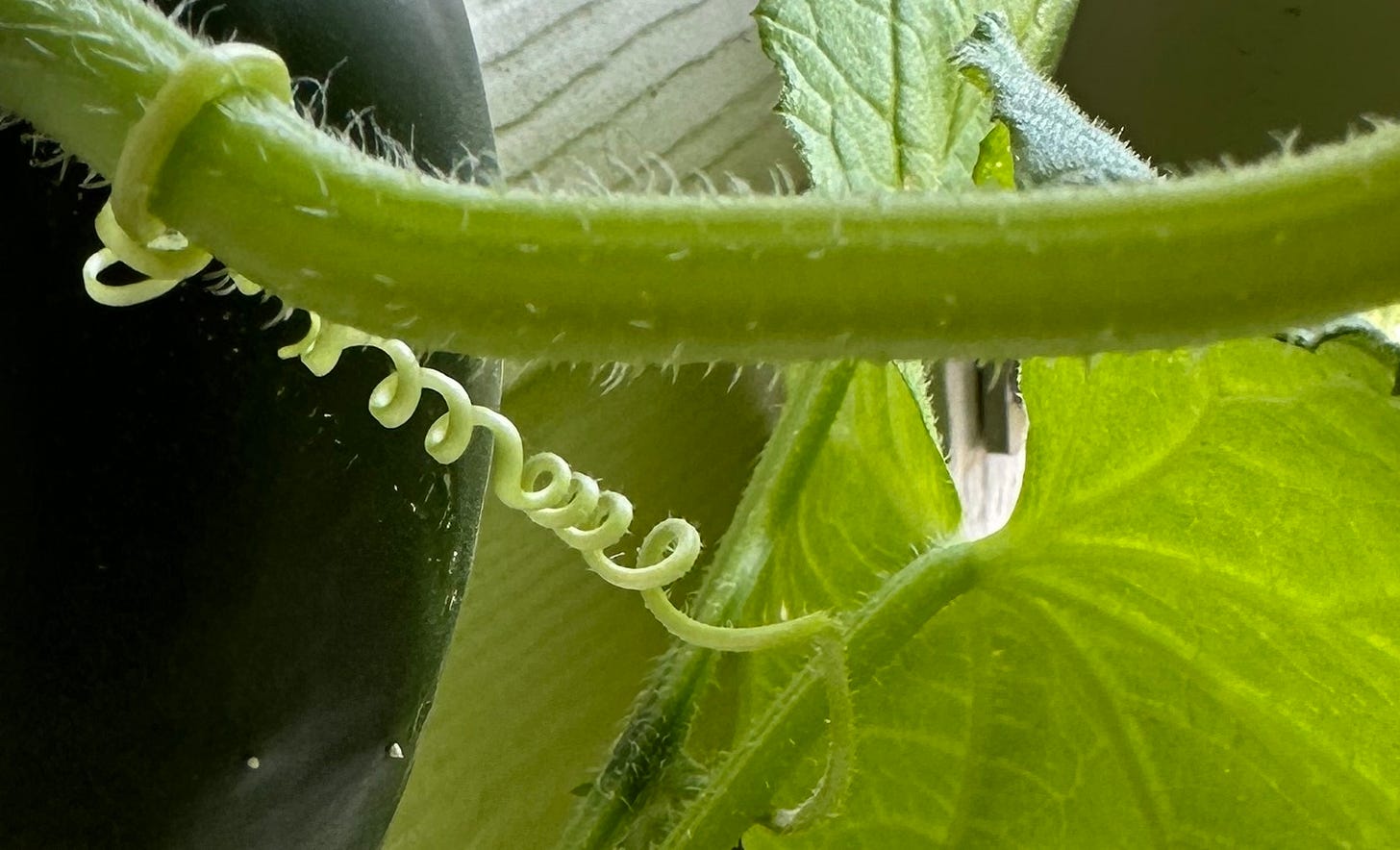Three days ago I picked my fifth cucumber on the balcony, snipping it off the vine with my kitchen scissors knowing it was the last of the season. I’d been watching it for a week or more. It was perfect. I peeled it and halved it in the middle and sliced it into slender sticks, gave half of them to David with the salt shaker (“They’re really fresh!”) and then mixed the drink I’d been waiting for since the last cucumber: Hendrick’s gin with tonic water and the cucumber sticks and a quarter of a fresh lime and its juice for the garnish. Perfect!
I drank the gin and tonic, and marveled at my fresh cucumber garnish, and I went out the next morning and cut the cucumber vine into pieces and put it in the trash. The summer was over.
But here’s what I’m still wondering about: how did that cucumber vine know when to put out its super-slender pale green tendrils and wrap them around the string I had strung nearby?
It’s the wrapping that seemed like a miracle all summer long, and now still does.
I think I wanted it to keep being a miracle before I wrote about it, and so I hadn’t done any research. I was sure there was some scientific explanation for it, and when I wrote about my cucumber awe, I would explain the science before I explained why I couldn’t stop thinking about that curling. But when I typed in “cucumber vine clinging”, I found the phrases “tendril coiling” and “helical coiling” at science dot org and then the astounding words “elusive” and “unknown.”
The underlying mechanism remains elusive, it said. The mechanical behavior remains unknown, it said. A reference to Sharon Gerbode and Joshua Pusey at Harvard and something about g-fiber cells and mature coil structure and the hydrophobic qualities of lignin suggested that quite a few things about cucumber tendrils are beginning to be understood, and even Charles Darwin in his day considered the “perversion” of a tendril when it changed direction. Sharon Gebode talked about how she spent “a lot of time pulling on telephone cords” at the beginning, trying to understand the mechanism.
It made me very happy to learn that even these very bright scientists and their friends who produced mathematical models and found out quite a bit about “structural flexibility” still don’t know everything. I like that there’s still an element of mystery attaching to cucumber tendril coils.
As I watched those tendrils coiling all summer, hanging on for dear life as it were, I thought about life itself on this planet of ours, about our own very lives, and every time I saw a new coil appear I felt a sense of elation. I would sit on my folding chair and reckon that if the cucumber could hang on, could know how to keep going, could make unbelievable, unimaginable twists around a string, could know when to do that and produce a delicious fruit in the bargain, well, really, anything was possible.
You might call this kind of thinking a bit of a stretch, but only the cucumber knows.





You're such a beautiful writer. Thank you for sharing.